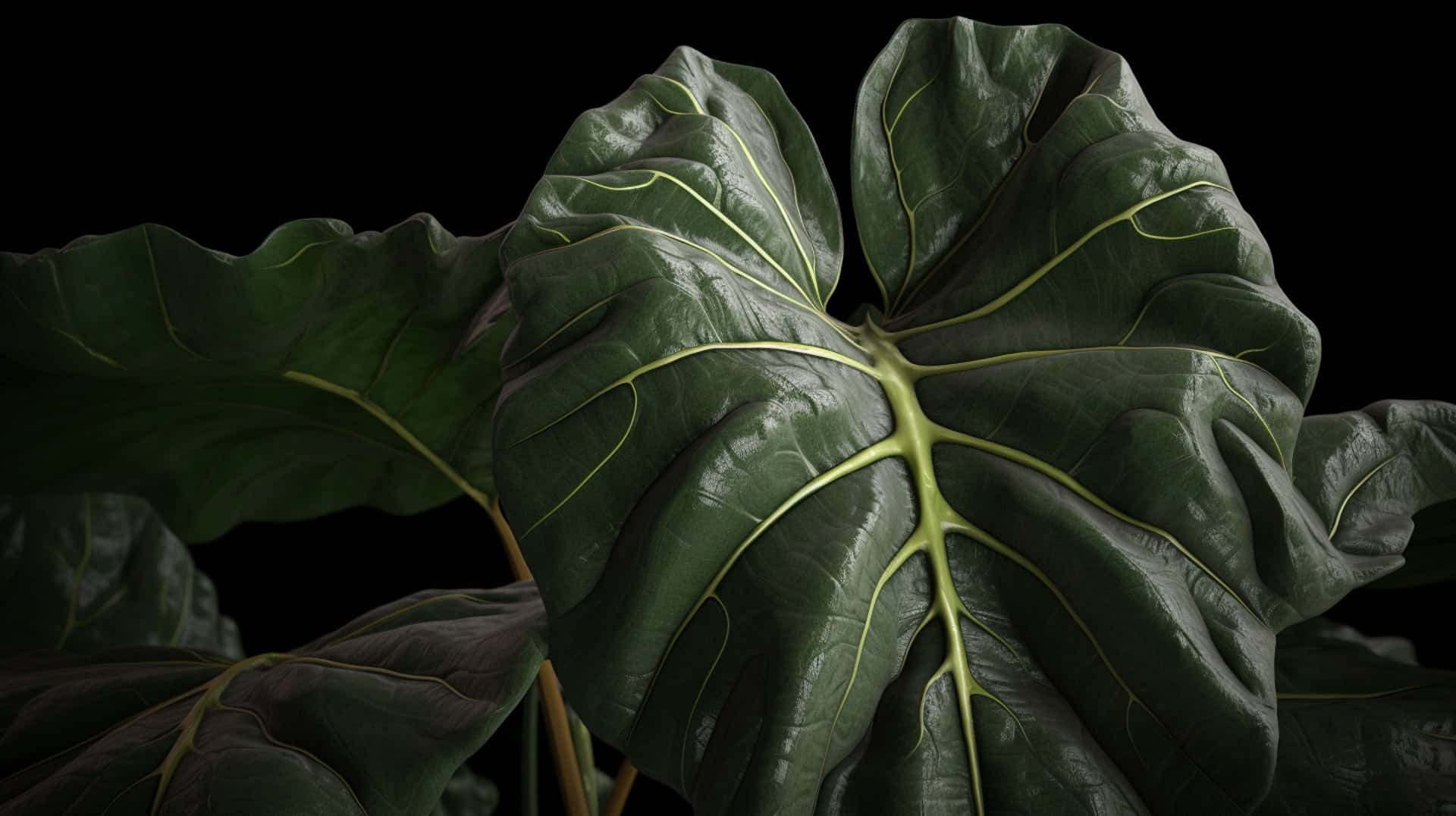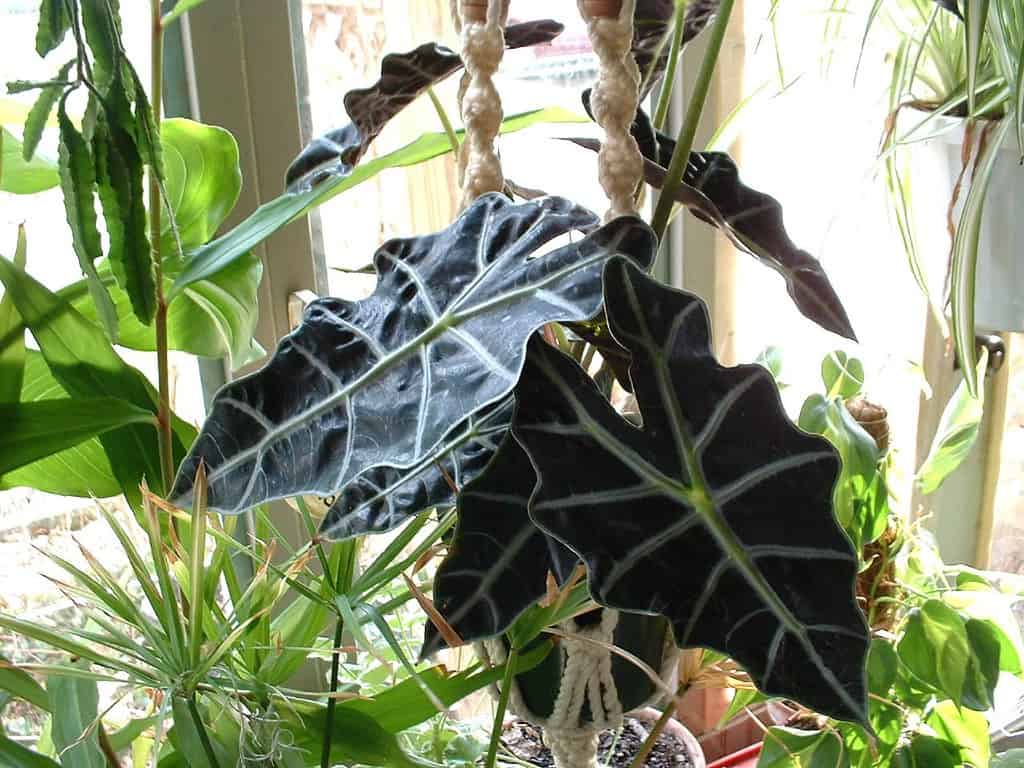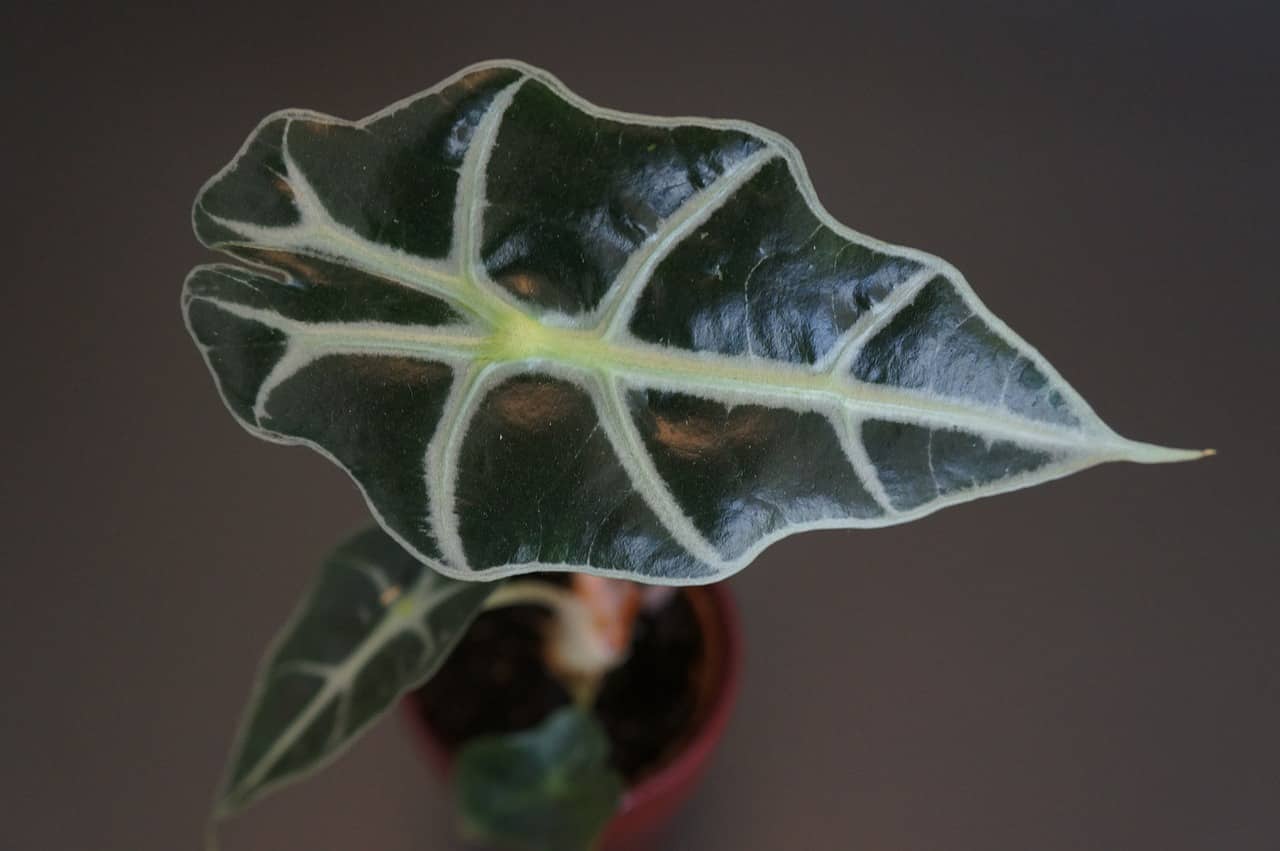No products in the cart.
Have you recently started collecting houseplants or want to become a plant parent? Then Mother Nature has a gift for you, the Alocasia sarian tropical perennial. It is a sizable indoor plant that will fit into the corner of your house without any fuss.
One thing is for sure it will become the centerpiece with its airy stem and gorgeous leaf structure. So, if you already have one of these Alocasia plants, you can find some helpful care tips here. Still, if you do not have one, add it to your tropical collection today.
More About the Alocasia Sarian plant?
Alocasia sarian is a hybrid between the Alocasia zebrina and Alocasia micholitziana. The plant is named after an agricultural journalist Zac B. Sarian from the Phillippines. Hence the full name of this beautiful plant is Alocasia zebrina sarian.
The parent plants and the Alocasia sarian are rhizomatous plants with attractive foliage. Some familiar names are African Mask or Elephant Ear Plant. The plant has prominent white veins passing on the leaves growing on a long thick striped petiole.
The tropical perennial plant blooms calla lily-like unscented flowers, but it may never bloom indoors. Both parent plants grow in Australia and Asia’s tropical or subtropical regions. The Alocasia sarian, like all genera of Alocasia, belongs to the Araceae family.
Another interesting thing is the leaves are part of the stem and do not develop at the end of the stem. When grown in a tropical climate, the plant can reach up to 12 feet tall, but in colder climates, it only reaches six feet tall.
Alocasia Sarian Care Tips

Caring for your sarian plant is not complicated, whether grown indoors or as an outdoor plant. For planting outside, the best time is in the spring or summertime. Another consideration is the plant’s size; it will need ample space to grow in the ground. So, give them enough space to give them room for growth.
Ideal Soil For Alocasia Plant is Moist Soil
For optimal Alocasia sarian growth, your plant needs well-drained soil. The plant’s root system does not grow well in a heavy soil mixture as it is a rhizomatous plant. Neither should you use rocky or sandy soils but organically rich soil with moisture retention.
According to the Missouri Botanical Garden, the recommended USDA hardiness zones are 9 to 11. For outdoor growing, the night temperature needs to remain above 60°F. Another concern with container growing is to ensure the pot has enough drainage holes, as Alocasia sarian plants are susceptible to root rot.
The Right Lighting Conditions for Sarian Plants

Ideally, you grow the sarian plant indoors and need the best lighting conditions for those dark green leaves. Yet, while you can keep your plant in direct sunlight, it will cause leaf scorching. Hence, we recommend a bright, indirect sunlight spot to help maintain the foliage color indoors.
For outdoors, choose a location with partial sun when growing outdoors for these plant species.
How to Water Alocasia Sarian to Prevent Soggy Soil
A well-draining soil is essential to ensure that your tuberous plant does not get root rot. Still, the soil must also remain moist, so it helps to check it regularly. You may need to water your Alocasia plant during the growing season often.
We recommend watering your plant at regular intervals in smaller amounts. This watering method helps to provide the desired moisture without getting soggy soil. Yet, the fact is that these plant species are not drought-tolerant, and the lack of water shows up in the leaves.
Neither does your plant like excessive watering, and the water needs to be removed from the catch saucer as it does not enjoy wet feet. The foliage will start to curl and become crispy with brown leaf edges.
A recommended watering schedule is twice a week in the summer and once a week in winter. But we still prefer using the finger test in the soil instead of a fixed schedule.
Temperature and Humidity Loving Plant
The Alocasia sarian is similar to most other plants that live in tropical environments. As a result, your plant is susceptible to extremely cold temperatures. But growing as a houseplant, it will appreciate the warmth and humidity indoors.
The ideal temperature for this plant’s perennial life cycle is between 65 to 72 degrees Fahrenheit (18-22° C) for healthy growth. Still, it is a fussy plant with lower temperatures that reduce growth. So, if you have a growth problem, it helps move your plant to a warmer spot with natural light to prevent poor health.
Furthermore, we recommend overwintering for the winter season if you do not live in warm climates and have freezing temperatures outside. Another concern is that most Alocasia sarian plants struggle with low humidity.
Hence, it needs humid environments of 60% or higher to thrive. As important as it is not to place your plant in direct sunlight, it should not stand close to drafts of ACs or near radiators. A great way to provide the correct indoor humidity is to group your plant to achieve the humidity levels it needs.

Alternatively, it also helps to invest in a humidifier or use a pebble tray with water to maintain humidity.
Fertilizing Alocasia Sarian
Giving your plant some plant food will help with optimum growth, even if it is a fast-growing plant. In addition, we recommend a liquid fertilizer or organic fertilizers in the spring to summer. If you notice too much growth, it helps to increase the feed.
Still, if you are like most people that can forget to feed their plants, a slow-release fertilizer works best. The great thing about this feed is that it prevents over-fertilizing preventing the roots from getting chemical burns.
When fall arrives, you can discontinue feeding and start again in the early spring season.
Repotting and Pruning Your Plant
It helps to provide your Alocasia sarian with fresh soil annually but repotting is not always needed and only done when it outgrows the pot. If you have just received a new plant, we recommend not transplanting it until it gets used to its new environment.
One more important thing, we recommend doing it in the growing season from spring to early summer when it comes to repotting. Also, provide well-drained soil and plant it at the same soil line as in the old container.
Another helpful tip is to prune your sarian plant to maintain its size; as mentioned, it is a fast-growing species. That brings us to the following section propagation: you can prune a few leaves or take stem cuttings.
The only other time your sarian plant needs a trim is to remove infected, damaged, or decaying foliage. You can remove yellow leaves to give them a refreshing look.
Water and Soil Propagation
Multiply your sarian plant propagation is a great way to achieve this instead of buying plants the whole time. You can do this with rhizome division, which works well for crowded plants. As the plant develops from a tuber, it produces small offsets that are copies of the mother plant.
The pups grow from the base, known as basal offset division. You can remove them to plant them in pots. The best way to do this is to water your plant well a day or two before the time. Then remove your plant from the container and brush away all the excess soil.
It helps to be careful when the soil forms huge clumps as it will damage the delicate roots. We recommend using sterilized scissors or a knife to help untangle the roots. The best time to do this is in spring to early summer.
propagation using water
For rhizome propagation, the water method works well for successful rooting.
Prepare a container or a jar and fill it with room temperature water for 24 hours to help remove the impurities like chlorine.
Take your rhizome from the parent plant and place it in the water in a bright spot with filtered sunlight. The best is to avoid direct light, as it can lead to algae growth.
Keep freshening up the water as needed, then add a small amount of liquid feed.
Once you notice plant growth, you can place it into a container with soil.
Propagation using soil
Since your plant has tiny roots, you can plant it directly into the soil. Use a pot with drainage holes and add the required potting medium.
We recommend potting soil mixed with perlite and coco coir.
Plant your rhizome in a small-sized hole and cover it.
Please give it some water and leave it in a sunny location to grow.
As it can get transplant shock, it might take a few weeks before you see new growth.
Alocasia Sarian Similar Plants
In the rare Alocasia genus, you can find many species similar to the Alocasia sarian to grow as houseplants or outdoors. Here are some of our favorites:
Alocasia amazonica ‘Polly’
 alocasia amazonica polly @flickr
alocasia amazonica polly @flickr
Polly is a popular, readily available variety that goes by the name Kris or African Mask plant. It is a hybrid of the Alocasia sanderiana and Alocasia watsoniana. The plant has slender dark green foliage, undulating wavy edges, and thick white veins. The plant grows compactly up to 24 inches tall with a 10-inch width.
Alocasia amazonica ‘Bambino’

The Bambino is smaller than Polly, with deep green leaves forming an arrowhead shape. It has silver-green veins with a purple underside. The houseplant grows up to 12 inches high and is perfect for small spaces.
Alocasia amazonica‘ Ivory Coast’
Another hybrid is the Ivy Coast, with arrow-shaped leaves but does not have wavy or crinkled leaf surface edges. It is fast-growing with brown-streaked pink petioles. It can grow up to four feet with a width of three feet.
Alocasia Sarian Diseases and Pests
As with most plants, your Alocasia sarian has its fair share of problems, as follows:
Brow Leaf Spots
Brown spots can develop for different reasons, from cold temperatures, direct sun exposure, or low humidity. We recommend pruning away the leaves and playing around with your plant by moving it into bright indirect light, checking for drafts, and providing it with more humidity.
Root Rot
Your plant is susceptible to rotting from overwatering or when the environment is not warm enough. It helps to use bottom heat mats underneath your plant in winter.
Leaves Turning Yellow
When overwatered, your sarian plant develops yellow leaves, eventually dropping off. The same can happen with underwater plants dropping their leaves. Hence, we recommend checking the soil to determine if your plant is over or underwater and adjusting accordingly. Another sign of underwatering is brown leaf tips.
Spider Mites
The insect is a big concern with most Alocasia plants. If you notice a gray discoloration on the foliage, it is spider mites. You will see white webbing around the stem and leaves. The best solution to treat this pes is with neem oil or moderate use of chemical pesticides.
Frequently Asked Questions
The best way to distinguish the two plants is to look at the edges of the leaves. The sanderiana has lime-green or whitish margins along the leaf edge. While the sarian plant has no margin definitions, and the sanderiana is a smaller plant with thinner stems.
Under optimal outdoor growing conditions, the sarian plant can reach up to 12 feet, and the foliage can grow big. Still, the size varies on where you have your plant growing. Still, it grows fast and can take over your other plants’ space. For this reason, it helps to provide enough space between your sarian and other plants.
As with most plants in the Alocasia genus, your sarian plant goes dormant during the winter season. At this time, it helps to water your plant less and refrain from using fertilizer. If you live in colder regions with excessive temperature drops, it is best to overwinter your plant until the spring season arrives.
The Alocasia sarian is a rare plant to find in most local garden centers. But if you want to get your hands on this tropical plant, we have some good news. You can find this beauty right here with us at Plantly.
Whether you want to buy, sell, or simply reach out to other plant enthusiasts, Plantly is the right place to be!


